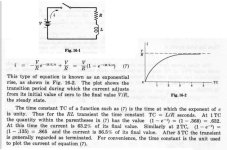bernie_carlton
Lifetime Supporting Member + Moderator
Not content to let a good argument go by let's not forget about another difference between AC and DC coils which have moving cores. On the AC the core is not pulled in at startup. There is a high current. Then, as the core pulls in, the impedence of the coil at 60HZ (or whatever the rated frequency) rises and the driving current lowers with the eventual holding current being less. A DC coil experiences no such change in impedence even though the core still pulls in. Thus larger DC contactors sometimes have a pull-in and a holding coil, the pull-in coil being disconnected once the contactor makes leaving the holding coil energized at a much lower current.






